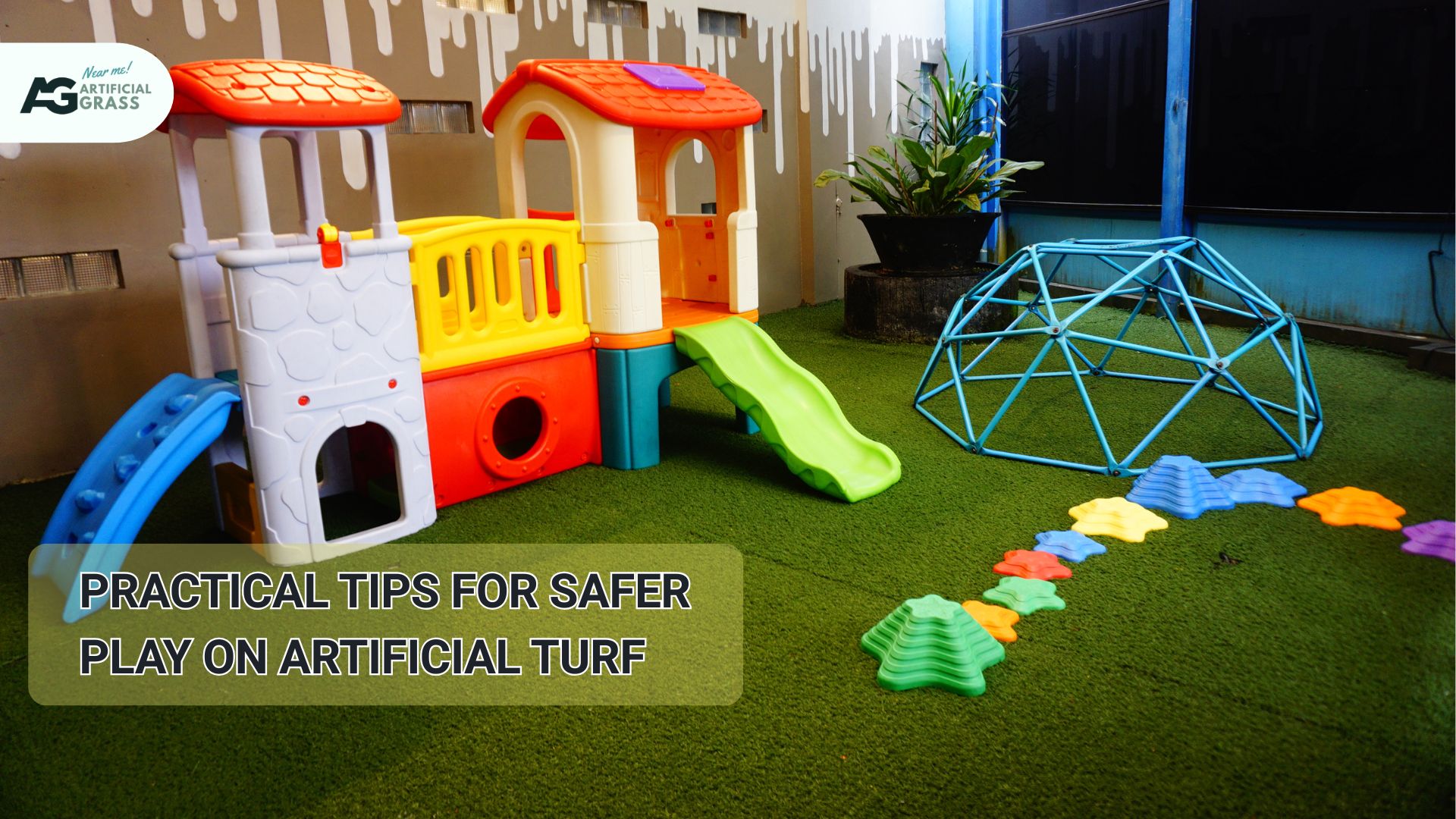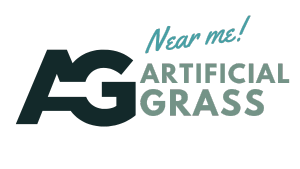
Artificial turf can be a safe, clean play surface when you design for falls, heat, drainage, and upkeep from the start. Many risks come not from the turf itself but from thin bases, missing shock pads, poor seams, or weak cleaning routines. This guide focuses on practical steps that work in UK schools, nurseries, and gardens. You will learn how to choose infill, control temperature, maintain grip, and plan checks that stick. With that groundwork set, let’s define what “safe” really means day to day.
What makes an artificial turf play area “safe” in practice?
A safe play area is one where surfaces cushion falls, water drains quickly, seams and edges don’t catch feet, and grip stays reliable. Safe spaces also manage heat, stay clean and sanitary, and support wheelchair access without soft spots. Good design aligns with manufacturer guidance and records what was installed where. Staff and parents know simple rules, such as footwear requirements and maximum user numbers. With safety defined, the next step is padding for falls.
Do I need a shock pad, and what fall height should I design for?
You need a shock pad whenever equipment height could cause injury, and you should match pad thickness to the critical fall height of your tallest feature. Pads sit under the turf and are tested to reduce impact forces, as measured by HIC. Thicker pads or multi-layer systems may be required under climbing frames and slide exits. Domestic play areas also benefit from thinner pads for comfort and peace of mind. With impact control planned, you can shape the base and drainage to keep the surface firm and dry.
How should I plan the base and drainage for safer surfaces?
You should build a firm, free-draining base with a slight fall so rain clears fast and the turf does not pump water to the surface. Compacted MOT Type 1 below a smooth granite-dust layer gives stability for prams and wheelchairs. A geotextile membrane helps keep fines separate and limits weed growth. Route water to a soakaway or gulley and avoid directing runoff toward buildings. With water managed below, choose infill that supports fibres and safe movement above.
Which infill types are safest for play and why?
Rounded kiln-dried silica sand is the standard for support and ballast because it stabilises fibres without sharp edges. TPE/EPDM infills add resilience and comfort in high-activity zones. At the same time, cork or organic materials can reduce heat but require steady upkeep. Zeolite helps control odour in areas shared with pets, but is not a substitute for cleaning. Avoid loose, dusty materials that migrate or clump, as they can affect grip and hygiene. Once infill is sorted, you can keep the surface cooler on bright days.
How can I reduce the heat on sunny days without closing off the area?
You reduce heat with shade sails, light misting, lighter turf tones, cooling infill, and planned break times during peak sun. Portable shade and scheduled rotations help keep activity levels safe without stopping play. Encourage water breaks and set out “cool zones” on adjacent natural shade or hardstanding. Record a simple heat policy so staff know when to adapt games. With comfort under control, small rules about footwear go a long way for everyday safety.
What footwear and rules help prevent slips and trips?
Flat, closed shoes with clean soles protect toes and maintain traction, and you should avoid studs or heels that can catch seams or pads. Keep laces tied and ban scooters or bikes on the turf unless the area is designed for wheels. Teach children to look before turning and to slow down at entrances and exits. Place a boot brush or mat to keep grit off the pile. With movement safer, it’s time to keep the surface clean and germ-aware.
How should I clean and sanitise a children’s play surface?
You should remove debris daily, spot-rinse spills, and use a child-safe antimicrobial cleaner on high-touch areas each week. Enzyme cleaners help with organic messes and odours, especially if pets or wildlife are around. Rinse thoroughly to keep residues from making fibres tacky or slick. Schedule deeper washes in warm months when usage is high. With hygiene covered, brushing keeps the pile upright and grippy.
How often should I brush or groom the playground turf?
You should brush weekly in busy seasons and at least monthly otherwise to lift fibres, even out infill, and restore traction. A power broom speeds work on larger areas, while a stiff brush is fine for small spaces. Focus on gateways, under swings, and turning zones where flattening appears first. Log each session so patterns and issues are easy to spot. With the surface groomed, consider how everyone gets onto the field with ease.
How do I design for accessibility and inclusive play?
You design for inclusion by keeping gradients gentle, edges flush, gates wide, and routes firm for wheelchairs and prams. Provide turning circles and place benches in shade with clear approach paths. Use contrasting edging or painted lines to guide low-vision users. Keep equipment choices varied so that players of different abilities can join the same games. With smooth, tidy movement, tidy boundaries help prevent trips.
What edging and seam details improve safety at the boundaries?
You improve boundary safety with solid edging set to the finished height, so there is no lip to catch a foot or wheel. Seams should follow the pile direction and be bonded with quality tape and adhesive. Trim edges cleanly and pin discreetly where traffic is heavy. Inspect joins often, as early repair is simpler and safer. With the surface sound, equipment fixings need the same care.
How should equipment be anchored on or near turf?
You should fix posts to safe footings outside the turf seam lines and protect edges with neat cuts and covers. Use rated anchors and follow the equipment supplier’s foundation details. Keep fall zones clear of hard fittings and provide pads where children land—Reinspect anchors seasonally and after storms. With equipment secure, you can formalise checks so nothing gets missed.
How do I set a simple inspection and maintenance schedule?
You set a schedule by listing daily, weekly, monthly, and termly checks that are fast to complete and easy to prove. Daily is litter, spills, and obvious damage; weekly is brushing and quick seam and edge checks; monthly is infill top-ups and hardware reviews; termly is a deeper clean and report. Assign named owners and keep a one-page log on a clipboard by the gate: photograph issues and fixes for records and warranty. With a routine in place, it’s easier to avoid common pitfalls.
What common mistakes create hazards, and how can I avoid them?
Thin bases, missing shock pads, open seams, loose infill, and blocked drainage create most hazards, and you avoid them with clear specs and regular checks. Heat build-up without shade plans leads to discomfort and poor behaviour on the field. Slippery films from soap or sunscreen can be resolved with better rinsing and scheduled cleans. Toys with sharp edges and bikes on the surface cause rips and trips, so set simple rules. With risks named, you can adapt the space if pets also use it.
Can pets share the play space, and what changes are needed?
Pets can share the space if you create a designated, well-drained zone with zeolite infill and an easy rinse point. Train animals to use that area and remove solids promptly to protect hygiene. Use enzyme cleaners and adjust brushing frequency in warm months. Consider temporary fences during school hours to control access. With pets managed, the final layer is documentation.
What should I document for compliance, insurers, and parents?
You should document the product specs, pad thickness, base design, drainage route, infill type, and maintenance schedule so anyone can audit the site. Keep supplier datasheets, warranties, and installation photos together. Record inspections and cleans with dates, names, and actions taken. Share a simple user code with families about footwear, heat, and toys. Clear documentation also helps address common myths about artificial grass, showing that when properly installed and maintained, it’s a safe and compliant choice for play areas. With records clear, you can wrap up your safety plan confidently.
Conclusion
Safe play on artificial turf comes from impact-tested padding, firm drainage, stable infill, clean fibres, and routines that take minutes, not hours. Plan shade and water breaks for warm days, set simple footwear rules, and keep edges and seams tight. Brush high-traffic spots often, clean with child-safe products, and log your checks. Build well once, maintain lightly, and enjoy a reliable surface that welcomes every child. For expert guidance and long-lasting results, trust UK specialists in artificial grass and landscaping to help you create safe, durable, and beautiful play areas.
